“A friend of mine is organising a mega KAMPALA POTHOLE PHOTO EXHIBITION” he wrote on X, the platform formerly known as Twitter, on April 15 last year. “Share here photos of potholes in Kampala city, with: location, depth, circumference, and estimated age of the pothole.” He asked his followers to tag the Kampala Capital City Authority (KCCA) and their counterpart responsible for the country’s roads.
Back in 2005, there were efforts to stage physical exhibitions of the country’s infamous potholes – what locals call “ponds” in the roads because of their size. But these attempts were thwarted by the police, recalls Ssentongo.
So the idea to hold an exhibition online came to mind, says Ssentongo, 45. He comes across as a deep thinker, taking time to consider his responses before speaking. Ssentongo admits that the tweet calling for pothole photos was “partly joking, partly sounding out how it would be received”, adding that he didn’t “plan to turn it into a grand initiative”.
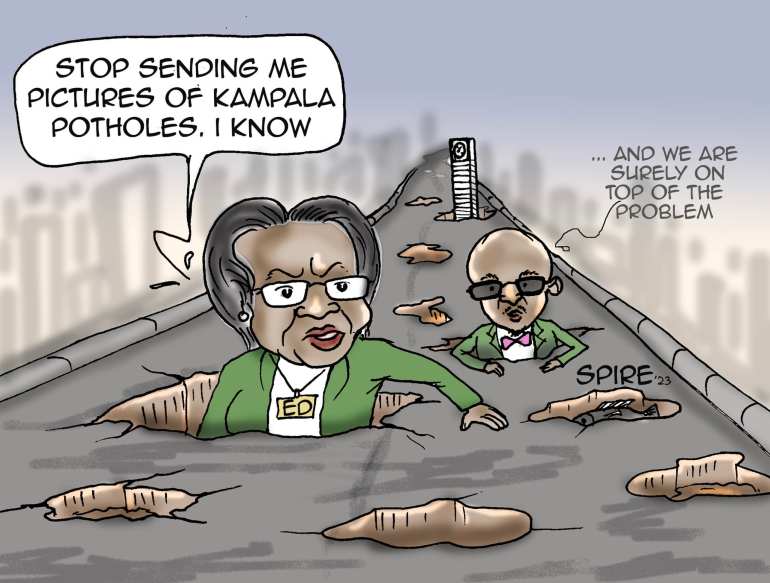
But that’s exactly what happened. Ugandans started uploading their photos immediately. In response, Joshua Mutabazi, added at least five photos to the thread, including one that shows a 30-centimetre (12-inch) pothole with a 3.5-metre (11.5-foot) circumference that he estimated was two years old. By the end of the day, there were more than 13,000 tweets with the hashtag the #KampalaPotholeExhibition, posted by fed-up citizens in the pothole-plagued country.
With physical protests all but barred in the country, this was an opportunity to hold the government accountable. And, to Ugandans’ surprise, there were results. Within a day, KCCA’s executive director, Dorothy Kisaka, made a public statement about the pothole situation, saying that the authority was constrained by inadequate government funding.
The same day in Parliament the deputy speaker, Thomas Tabeywa, asked the minister of Kampala capital city and metropolitan affairs about the state of the roads. Less than a week after the online outrage began, ageing President Yoweri Museveni, 79, ordered the country’s Ministry of Finance to immediately release six billion shillings ($1,538,784) to repair the roads. The next month his son Muhoozi Kainerugaba inspected some of them.
This was the birth of a new form of protest in the East African nation, where those who have taken to the streets to demonstrate tend to languish in jail.
Nearly a year since that first exhibition call, Ssentonga has been involved in six more: about hospital conditions, foreign recruitment scandals, corruption and nepotism within non-governmental organisations (NGOs), human rights abuses, and more. Each campaign has used a specific hashtag such as #UgandaHealthExhibition and asked people to post “evidence” – photos, videos, audio, documents – of neglect or abuse by authorities. Some Ugandans have likened the protests to the Arab Spring.
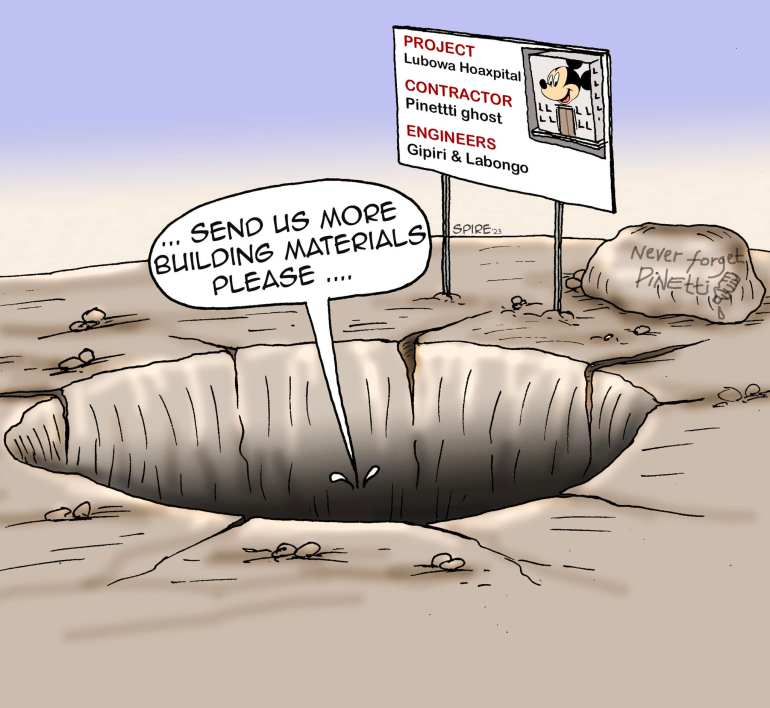
What’s remarkable is that the soft-spoken and unassuming cartoonist has been able to continue demonstrating online when other physical events, such as climate protests and what was dubbed the Walk to Work campaign in opposition to skyrocketing food prices, have been shut down by police or fizzled out.
Other online protests have been attempted. In 2020, Patience Ahumuza, a digital communications professional, started the “Wear that Mini” campaign, aimed at fighting online body shaming. She posted a photo of herself in a miniskirt and invited other Ugandan women to do the same. Hundreds of photos were uploaded.
Even though it died out, feminist movements like this laid the foundation for Ssentongo’s campaigns, notes human rights lawyer Gowdin Toko, who now helps spearhead the online exhibitions.
A well-drawn history
Ssentongo says that he is motivated by “the desire and passion to see things done better in the country or [have] things done more justly.” He explains that this “caring for the other, being mindful” reflects his training in two religious seminaries – although he was expelled from one institution and dropped out of another because he “didn’t have the calling”.
However, Ssentonga did find a calling as a political cartoonist while he was teaching ethics at a local university.
Ugandan newspapers began printing political cartoons in the 1960s. During the 1970s, in the era of the late dictator Idi Amin, they were used to parody social issues, Ssentongo says. “They avoided political discussions but by the ’80s had moved to cover political matters,” he explains. However, there hadn’t yet been academics, philosophers or writers who were also cartoonists, says Ssentongo. This was an advantage for them in “expanding modes of speech, especially on uncomfortable issues, plus triggering public debate through the hard-to-ignore vessel of humour”, he says.
Despite no formal training, he tried his hand at it – taking inspiration from Ugandan cartoonists such as Fred Senoga Makubuya (“Snoggie”), famous for an illustration in the late 1990s portraying an army major general as a chicken and the president as a chicken owner deciding what to do with his animals.
In 2005, Ssentongo walked into the office of local newspaper The Observer and handed then-Deputy Managing Editor Pius Katunzi a portfolio of work. Katunzi was impressed with one of his illustrations mocking the power cuts that were taking place in Uganda. In the cartoon, one local marabou stork is poking his beak directly in the face of another as they dangle on a power line. “I tell you it used to be quite dangerous to stand on these wires,” the first stork says. “Hmm,” replies his friend.
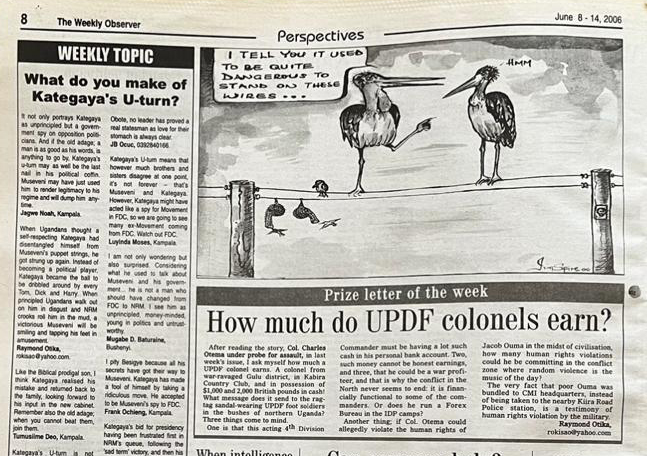
Ssentongo has been working for the paper on a freelance basis ever since.
“He’s not someone given to excitement, but he cares,” says Katunzi, now managing editor of The Observer. “Generally, he’s a quiet person. You don’t think all these kinds of things will come out of him. But he’s a deep thinker.”
Ssentongo, who is also a columnist and has published several books, is known for his satirical writing. People therefore easily relate to the crossover between his cartoon subjects and his other work, says the cartoonist. “But I’m also facilitated by my philosophy background,” Ssentongo adds.
Still, he didn’t expect his online campaigns to resonate with so many. “The deployment of humour in the exhibitions has been disarming – especially in the pothole exhibition,” says Ssentongo.
“What could they [the government] do about people simply making fun of the horrible capital city roads? They’d have looked stupid had they tried to use violence on us. Humour is powerful in repressive environments.”
Triumphs and tragedies
Social media is uncertain terrain in Uganda, where President Yoweri Museveni has ruled since 1986. In 2021, he banned Facebook in the lead-up to elections, which pushed many Ugandans to Twitter, now X.
The president and his son are prolific users of the platform, making it hard to block it, Ssentongo points out. This is one reason why his digital protests survived. “Partly it is because they cannot shut down all the channels and they know from the experience of shutting down Facebook that you just close the door and people use the other,” he says.
But there have been severe repercussions for some who used social media to criticise the government. Nearly two years ago, satirical novelist Kakwenza Rukirabashaija was detained, tortured and arrested for “offensive communication” after calling the president’s son Kainerugaba “an incompetent pig-headed curmudgeon” and “obese” on X. Activist and academic Stella Nyanzi was jailed for labelling the president a “pair of buttocks” on Facebook and convicted of cyber-harassment in 2017. Both sought refuge in Germany.
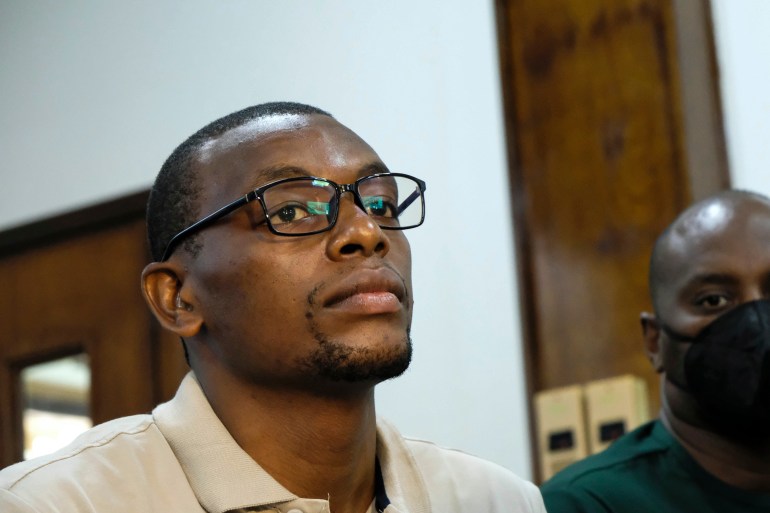
Many in Uganda now use a pseudonym on social media, says Isaac Tibasiima, an assistant lecturer in the Department of Literature at Makerere University, who has taught with Ssentonga. “But Jimmy was the kind of guy that said, ‘No, I will use my handle and I do not care what’s going to come out.’”
Social media made him so popular that while once reluctant to call himself a political activist, he now embraces the term. Today, some want Ssentongo to run for president, but he humbly shrugs it off.
He thinks the online exhibitions have been popular because they serve as a form of therapy – “just some avenue to vent, to get some temporary relief”, says Ssentongo. “But it’s really encouraging that it has made so many more people active, even those that have been quiet.”
Many voices – more than 10 million across YouTube, Twitter and Reddit – spoke to the #UgandaHealthExhibition campaign, launched just after the pothole protest. Some of the responses, which are still being posted, show patients sleeping on hospital floors and flag medical and supply shortages and rundown equipment.
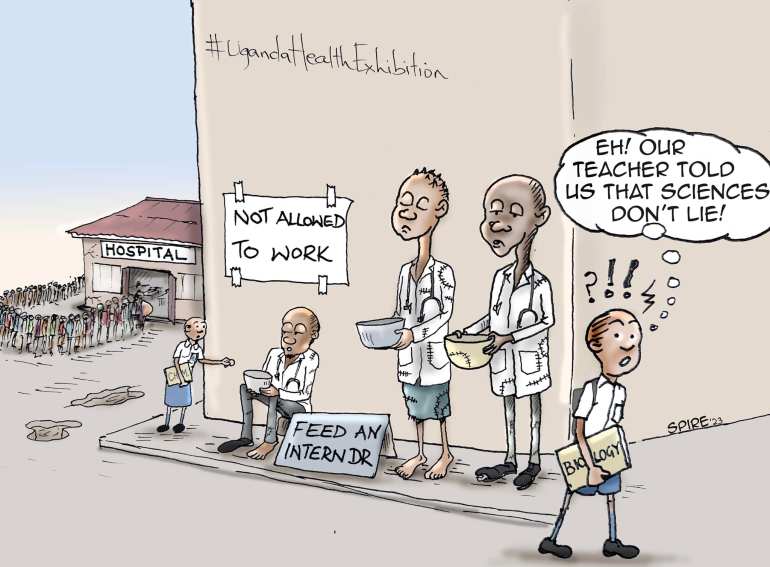
The latest protest, the #UgandaParliamentExhibition, which has been running since late February and highlights issues of suspect government, may be the most contentious yet. It has so far led to the country’s Inspector General of Government (IGG), the Ugandan government arm that investigates corruption, to open a probe into Parliament after allegations of misuse of public funds. National police spokesperson Fred Enanga and Kampala metropolitan police spokesperson Patrick Onyango referred Al Jazeera to the IGG, which did not respond to requests for comment.)
This is rare in Uganda. Health ministry spokesperson Emmanuel Ainebyoona — whom many journalists accuse of dodging their questions — responded directly to some of the posts on the Uganda health exhibition last year. He tells Al Jazeera that many of the issues flagged on X “have been addressed” and they’ve tackled health worker shortages, among other measures.
The protests have been successful in exposing nepotism and corruption in Uganda, where the media are restricted, intimidated and bribed, says Agather Atuhaire, a Ugandan journalist and activist who was recently recognised with the International Women of Courage award. She is also co-founder of Agora, a local platform for citizen engagement. Inspired by the pothole campaign, she approached Ssentongo in June about leading an exhibition “about the rotten NGOs”.
“The digital activism revolution has been huge,” says Atuhaire. “It’s a new thing. I think that’s why the authorities must be worried about it – there’s nothing they can do about it.”
‘Smear campaigns’ and threats
Amid the success of the public exhibitions, there have also been worries. The first time that Ssentongo realised his campaigns might be putting his life in danger was last April, after a second healthcare system protest.
An acquaintance alerted him to a possible threat to his life and advised Ssentongo to leave the country soon. He didn’t and then tweeted, “Should they arrest me, proceed with the exhibition. They can’t arrest the exhibition.”
Soon afterwards, he was summoned to a police station for cyberstalking. However, the case was dropped.
Atuhaire says that she has also been threatened “directly and indirectly;” she’s been followed and was warned that her phone had been tapped.
There’s also been what Ssentongo calls a “smear campaign” with tabloids running stories about alleged affairs with university students and claims of sexual harassment – all “clearly geared towards silencing me”, he says.
Rukirabashaija says, “It’s difficult to predict with certainty whether he can end up like me – tortured and exiled – but sometimes, I pity and worry about him”.
“Given the unpredictability of authoritarian regimes like this one in Uganda, their responses to dissent sometimes come indirectly in the form of financial harassment, unexplained knockdown or assassinations, poisoning, trumped up charges among other brutal things,” he says.
Nyanzi expects that Ssentongo will be arrested soon. “The threats [have] already started,” she says. “That’s how it started with me.”
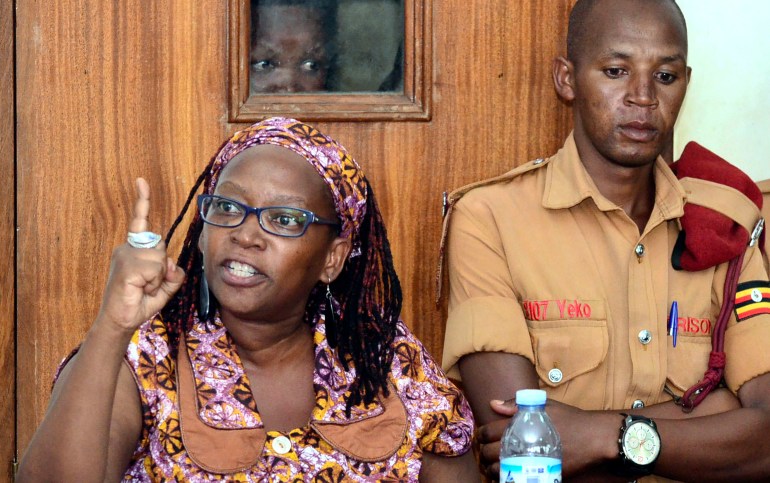
Ssentongo has evaded the authorities so far, says Toko, because he has “a serious profile with the academia, in the diplomatic circles and even with a lot of ordinary Ugandans now … From what happened with Rukirabashaija [the government] knows that touching him can cause serious issues.”
But it’s too early to declare Ssentongo safe, the lawyer stresses. “He’s been an outright activist for less than a year,” says Toko. “However, his profile keeps growing so this may mean it’s hard now and will be even harder with time.”
Ssentongo says he can’t explain why he hasn’t been arrested yet, nor the motivation and methods of the government. “Hybrid regimes don’t easily render themselves to prediction and explanation,” he says. “How they choose their targets you can’t tell. You only pray that you survive.”
For now, he wishes to remain in Uganda. “If I have a tipping point … there are certain things I wouldn’t want to happen. I wouldn’t want to lose my life, certainly, my job, be harmed in any way physically or mentally, psychologically, by the things you go through when you go through character assassination. But … it’s the current situation that is happening at the time that determines your mental state.”
Does he have an escape plan? “Maybe I’m naive or foolhardy, but I want to tell myself that I won’t have to run,” he says thoughtfully. “I will cross that river when I get to it. I don’t think Stella or Kakwenze planned earlier to escape.”
These days, Ssentonga’s cartoons avoid subjects like people’s personal matters, including those of government figures — unless their privacy is entangled with accountability. “There are some people you have to critique carefully and certain topics that you have to be very careful … about such as LGBTQI related issues,” says Ssentongo, referring to an anti-gay law that Uganda approved a year ago. But he has broached even this subject, drawing a few cartoons about the new act and even several of the president’s son.
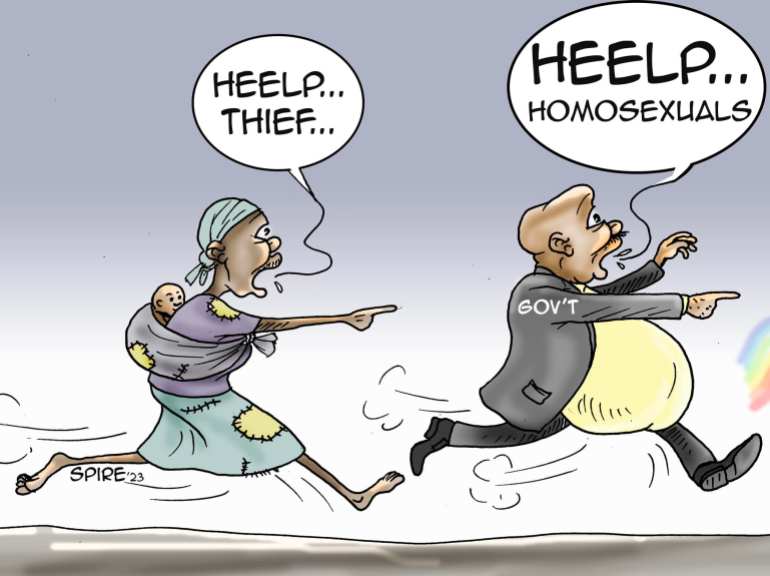
Ssentongo can’t say how long the exhibitions will last. And for all of their success, he finds it unsettling that digital protests may become the norm in Uganda because the freedom to take to the streets doesn’t exist. “I find it uncomfortable that many people want to look at that as the new solution,” says Ssentongo.
“They want to look at that as an approach that we should use to run away from other traditional methods. These different approaches should only be reinforcing each other but not be seen as alternatives or replace the other.”